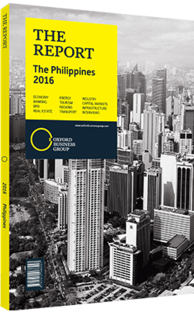Atsi Sheth, Associate Managing Director, Moody’s Investors Service: Interview

Interview: Atsi Sheth
What factors have influenced the Philippines’ latest credit rating hike?
ATSI SHETH: We last upgraded the Philippines’ sovereign rating in December 2014, acknowledging the continued progress on debt reduction, as well as strong economic performance compared to both regional peers and rating peers outside the region. Since then we have seen these trends remain intact, with GDP growth accelerating through 2015, as the pickup in domestic demand offset weak external demand.
Looking ahead we see the Philippines as having two advantages over regional peers. The first is that, compared to many neighbours, the Philippines is less reliant on trade with China and commodities exports. Second is the fiscal space available to the Philippines government, afforded by several years of narrowing deficits and falling debt. This allows the government to use counter-cyclical fiscal policy to compensate for any dampening effect that lower global growth could have on domestic GDP. Indeed, growth in 2015 was supported by a pickup in government spending in the second half of the year, although the full-year fiscal deficit stayed well under target.
Which sectors are best placed to benefit from the positive investment environment in the country?
SHETH: Sectors that can capitalise on the strength of domestic consumption are particularly well positioned. While other countries did not exhibit much of a boost from lower oil prices in 2015, Philippine private consumption grew in excess of 6% for only the second time in the last 25 years. Moreover, inflation has remained near the bottom of – and at times below – the central bank’s target range, allowing for continued monetary accommodation and bolstering consumer purchasing power. Acclerated consumption growth is also notable given the potential slowing of growth in remittances from overseas workers, as traditional sources of inflows face a difficult outlook.
How can the public and private sectors tap into opportunities within ASEAN, and what areas of investment should the government focus on?
SHETH: Arguably, the Philippines has already taken advantage of existing regional arrangements, especially with regards to the movement of labour. This is manifested in the prevalence of Filipino workers in the region, especially in the services industry, as well as in hospitality and IT. The country can also take further advantage of its tourism assets with transport links that are further integrated under the ASEAN Open Skies policy, but this would entail improvements to connectivity. To that end, the government has already started to improve a number of airports at popular tourist destinations, and is exploring ways to enhance Manila as a more welcoming gateway to the country, including the possible construction of a new airport.
What external economic factors could have an effect on the Philippines’ ability to attract foreign direct investment (FDI)?
SHETH: In terms of the potential to attract FDI, the most prominent external risk that faces the Philippines, and indeed the rest of the region, is the impact of slower global growth, particularly the impact of lower Chinese economic growth. Given China’s role at the heart of the region’s geographically dispersed supply chain, as well as the extent to which China itself is an important source of final demand, decreased appetite for Asian investment could weigh on the prospects of inward FDI into the Philippines.
On the other hand, domestic demand in the Philippines is likely to remain robust. With over 100m people, the Philippines is the second largest ASEAN country in terms of population. Rapid economic growth and falling unemployment, as well as healthy remittance inflows, have contributed to rising household incomes. If this trend of growing incomes is sustained, it is likely to continue to bring in FDI.
You have reached the limit of premium articles you can view for free.
Choose from the options below to purchase print or digital editions of our Reports. You can also purchase a website subscription giving you unlimited access to all of our Reports online for 12 months.
If you have already purchased this Report or have a website subscription, please login to continue.

